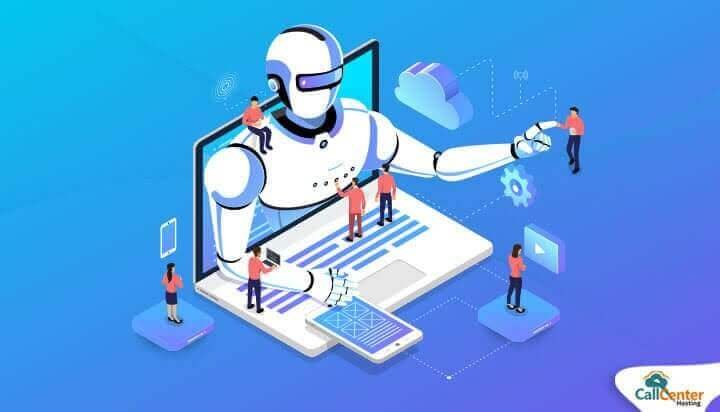Apple’s journey into AI is reaching a crucial turning point. Apple Intelligence 2.0: What to Expect in 2026 is not just an incremental update; it’s shaping up to redefine how Siri, device interactions, and developer tools work across iPhone, iPad, Mac, and beyond.
Thank you for reading this post, don't forget to subscribe!As Apple leans further into generative AI, 2026 may be the year its “privacy-first” vision truly meets scale.
In this post, we’ll explore Apple’s roadmap for Apple Intelligence 2.0, analyse key features, assess potential risks, and break down what this means for users, developers, and Apple’s ecosystem.
See more:
Where Apple Intelligence Stands in 2025
To understand Apple Intelligence 2.0: What to Expect in 2026, it’s helpful to recap what Apple has delivered so far:
-
Apple launched Apple Intelligence (announced at WWDC 2024) with generative features deeply integrated into iOS, iPadOS, and macOS.
-
It uses a hybrid architecture: on-device models for speed and privacy, and Private Cloud Compute for heavier AI tasks.
-
At WWDC 2025, Apple expanded access to its on-device foundation model for developers meaning third-party apps can now run inference locally, even offline.
-
New features released include: Genmoji (AI-generated emojis), Image Playground, smarter shortcuts via AI, and a “Workout Buddy” on Apple Watch.
-
Apple reaffirms its privacy commitment: data used in AI tasks is either processed on-device or sent securely to Apple’s Private Cloud Compute, with no long-term storage.
-
Moreover, Apple’s machine learning research team published updates to its on-device foundation language models in 2025, revealing improvements to efficiency, speed, and generative quality.
All this sets the stage for a more ambitious Apple Intelligence 2.0 in 2026.
Key Expectations: Apple Intelligence 2.0 in 2026

Here’s what we’re likely to see in Apple Intelligence 2.0 as Apple doubles down on its AI strategy in 2026:
1. The Arrival of LLM Siri (“Siri 2.0”)
One of the biggest anticipated upgrades is “LLM Siri,” a more conversational, large-language-model-powered Siri. According to reports:
-
Apple aims to launch this new Siri in spring 2026, likely tied to iOS 26.4.
-
The assistant will use a more advanced LLM architecture (possibly custom Apple models) to handle complex, multi-step queries, similar to ChatGPT-like conversations.
-
Apple is also expected to lean into App Intents, enabling Siri to execute more sophisticated tasks across third-party apps.
-
Siri’s responses could be more context-aware: it might reference your messages, calendar, or past interactions to make better suggestions.
This version of Siri marks a shift: Apple Intelligence 2.0: What to Expect in 2026 is increasingly about proactive, deeply integrated AI rather than just simple voice commands.
2. Third-Party AI Model Integrations
While Apple emphasises its own on-device models, 2026 may bring greater integration with third-party AI systems:
-
According to reporting, Apple is exploring partnerships or licensing with external LLM providers to boost Siri’s capabilities.
-
Some rumours suggest Apple may leverage Google’s Gemini model in a custom version to power parts of its AI stack, especially for Siri.
-
This hybrid approach lets Apple benefit from cutting-edge external AI while still maintaining its privacy architecture.
This model mix could accelerate Apple’s AI roadmap; Apple Intelligence 2.0: What to Expect in 2026 may rely less on entirely in-house models than previously assumed.
3. Improved On-Device Performance + Hybrid Compute
Expect performance gains in 2026 thanks to Apple’s focus on efficiency and local inference:
-
Apple’s Foundation Models framework (announced in 2025) gives developers direct access to the on-device LLM, enabling rich generative experiences without relying on the cloud.
-
Apple’s on-device models are being optimised for both speed and size, enabling more powerful generation, summarisation, and contextual reasoning.
-
For “heavy” requests that exceed on-device capacity, Apple will continue to use Private Cloud Compute, balancing performance with privacy.
In short, Apple Intelligence 2.0 is likely to blur the lines between device-bound speed and cloud-scale power.
4. Expanding AI Across Apple Devices
AI will spread more deeply into Apple’s product ecosystem:
-
Shortcuts: More intelligent, AI-powered actions. For instance, you could build a shortcut that summarises your lecture notes or converts voice memos into structured text using on-device models.
-
Apple Watch: The “Workout Buddy” feature, powered by Apple Intelligence, could get smarter offering more personalised coaching, motivation, and suggestions based on your health data and past workout history.
-
Vision / AR Devices: On devices like Apple Vision Pro, AI could provide context-aware visual intelligence generating insights or suggestions based on what you’re seeing or doing.
-
Cross-device intelligence: Siri or shortcuts initiated on one device (say, iPhone) might seamlessly continue on your Mac or iPad, making workflows more fluid.
5. Deepened Privacy Guarantees
Privacy remains a core selling point. Apple Intelligence 2.0 is likely to strengthen its promises:
-
The architecture continues to prioritise on-device inference, ensuring many AI tasks don’t require sending personal data to the cloud.
-
When cloud processing is needed, Private Cloud Compute ensures data is only used to fulfill the task and is not stored permanently.
-
Apple allows independent experts to verify its Private Cloud Compute infrastructure, increasing transparency.
-
Research suggests Apple’s rewriting tools (in its writing suite) can help mitigate inference attacks or privacy leakage from larger LLMs.
For many users, this privacy-first AI is what makes Apple’s 2026 vision so compelling.
Risks and Challenges for Apple Intelligence 2.0
While the roadmap is ambitious, Apple Intelligence 2.0: What to Expect in 2026 comes with potential hurdles:
-
Delayed Siri rollout: Apple has confirmed delays and internal restructuring around the LLM Siri project.
-
Dependence on third-party models: If Apple leans on Google Gemini or other external LLMs, it could dilute its “in-house” AI advantage and raise concerns about cost, control, and privacy.
-
Compute costs: Scaling private cloud compute to handle millions of AI requests could be expensive and technically challenging.
-
User friction: Users will need to adapt to a more conversational Siri; misinterpretations or privacy concerns could slow adoption.
-
Developer risk: As Apple opens up its LLMs via on-device APIs, developers must carefully design experiences to balance compute, battery, and privacy.
Why Apple Intelligence 2.0 Matters
Here’s why Apple Intelligence 2.0: What to Expect in 2026 is a big deal:
-
For consumers: A smarter, more natural Siri could feel less like a robot and more like a genuinely helpful assistant one that understands context, remembers your habits, and helps you more proactively.
-
For developers: On-device LLM access means less dependence on third-party LLM APIs and more possibilities for innovative, privacy-preserving apps.
-
For the Apple ecosystem: Intelligence becomes a differentiator. AI features tightly integrated across iPhone, Mac, Watch, and possibly Vision help Apple reinforce its value proposition.
-
For privacy-conscious users: Apple’s hybrid model gives a strong privacy narrative both on-device and in the cloud, which could attract users wary of less transparent AI.
Read on:
FAQs: Apple Intelligence 2.0: What to Expect in 2026
Q1: When will the new Siri (LLM Siri) come out?
According to reports, Apple is targeting spring 2026 (potentially as part of iOS 26.4) for the launch of the revamped, LLM-powered Siri.
Q2: Will Apple use third-party AI models like Google Gemini?
Yes; there is speculation and reporting that Apple may license a custom version of Google Gemini or other LLMs to enhance Siri’s performance.
Q3: Is Apple Intelligence safe and private?
Apple’s model processes many requests on-device. For heavier tasks, it uses Private Cloud Compute, ensuring data is used only to fulfil the request and not stored long-term.
Q4: Can developers build apps with Apple’s LLM?
Yes; Apple’s Foundation Models framework lets developers tap directly into its on-device LLM, enabling offline AI-powered features.
Q5: What devices will benefit most from Apple Intelligence 2.0?
Any device running Apple Intelligence–compatible hardware (e.g., Apple Silicon Macs, recent iPhones & iPads). Watch apps will also gain more context-aware AI from 2026.
Final Thoughts: Apple Intelligence 2.0: What to Expect in 2026
Apple Intelligence 2.0: What to Expect in 2026 is more than marketing fluff; it’s a carefully architected upgrade that could make Apple’s AI deeply personal, powerful, and private. With a smarter Siri, more accessible on-device LLMs, hybrid cloud compute, and broad developer access, Apple is playing the long game.
If Apple can deliver on this roadmap, 2026 could be the year its AI moves from novelty to necessity. But execution matters delays, cost, or a misstep on privacy could undermine its promise.
Want to Stay Ahead of AI Revolution?
At Naysblog, we break down the latest in tech from Apple Intelligence to generative AI strategies for businesses.
At GWC Tech, we help you build for the future AI integration, device optimisation, and growth automation.
Check out more at Naysblog.com
Partner with GWC Tech to turn your ideas into intelligent, AI-powered reality.



Pingback: How Custom Software Can 10x Business Efficiency in 2025 | GWC Tech Hub Limited